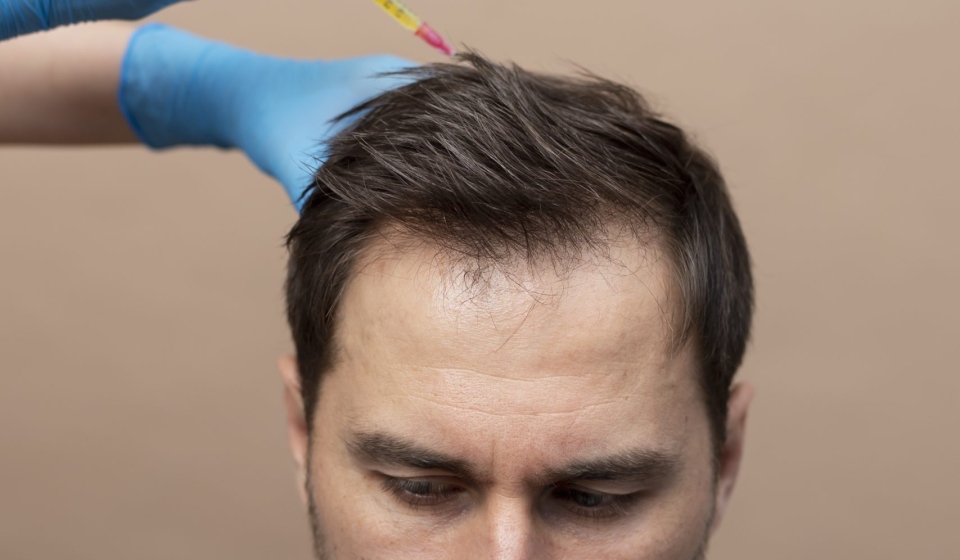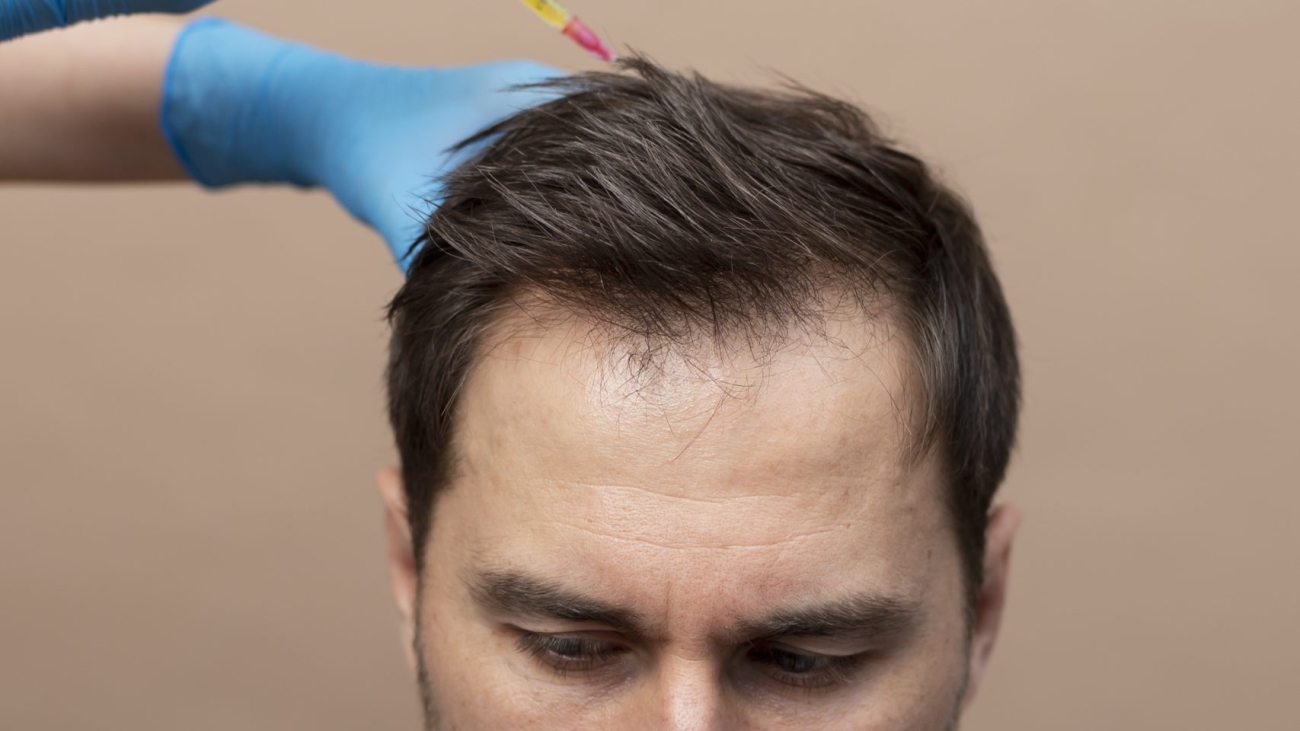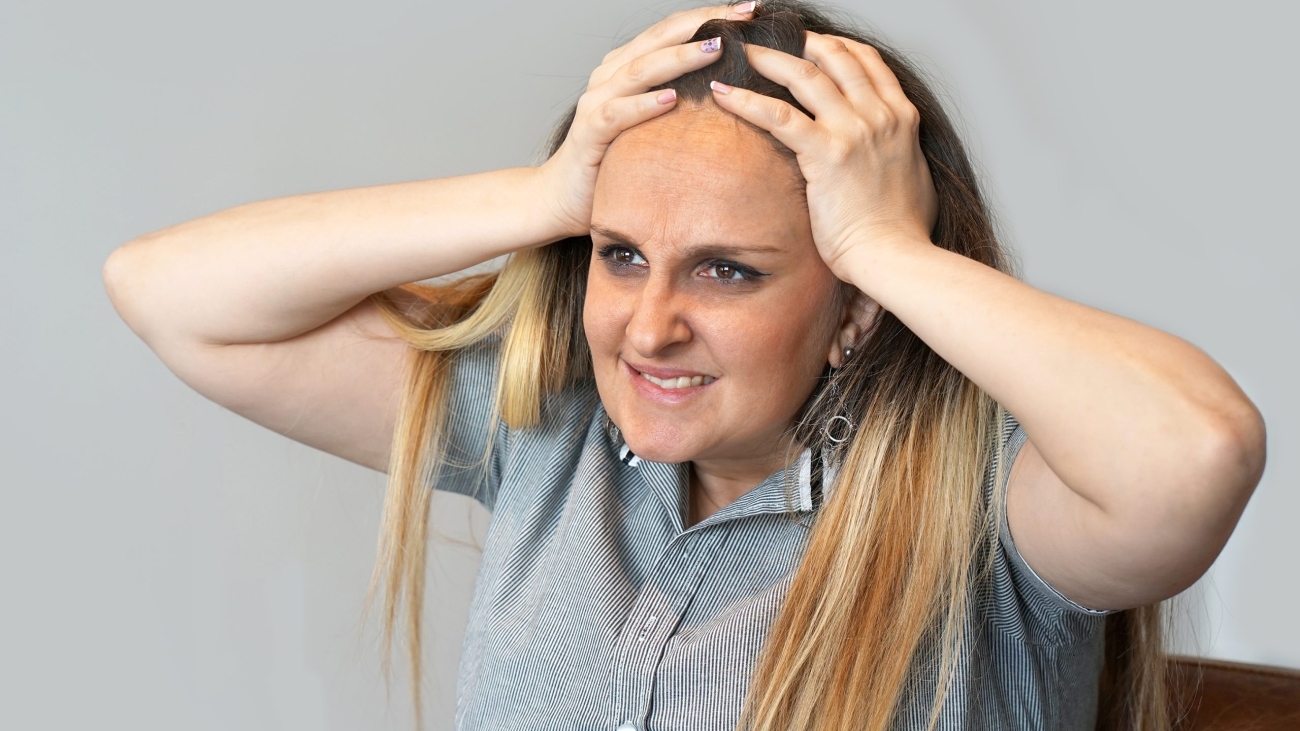Experiencing low energy and constant tiredness can significantly impact your daily life. Understanding the underlying causes is key to finding effective solutions. This blog post explores the top five common causes of low energy: insulin resistance, low thyroid function, vitamin B12 deficiency, Vitamin D deficiency, and low ferritin levels. We’ll delve into each cause and how they contribute to fatigue, providing insights for those seeking relief from persistent low energy.
1. Insulin Resistance: The Hidden Energy Drain
Insulin resistance occurs when cells in your body don’t respond effectively to insulin, leading to high blood sugar levels. This condition can cause fatigue, as your cells don’t get enough glucose to produce energy efficiently.
Recognizing Insulin Resistance:
- Symptoms: Increased thirst, frequent urination, fatigue, and hunger.
- Management: Regular exercise, a balanced diet, and, in some cases, medication can help improve insulin sensitivity.
2.Hypothyroidism: The Slowdown of Energy Production
The thyroid gland plays a crucial role in regulating metabolism. Low thyroid function, or hypothyroidism, can slow down bodily processes, leading to fatigue and low energy.
Addressing Low Thyroid Function:
- Symptoms: Fatigue, weight gain, cold sensitivity, and slow heart rate.
- Treatment: Thyroid hormone replacement therapy can help manage hypothyroidism effectively.
3. Vitamin B12 Deficiency: Crucial for Energy
Vitamin B12 is essential for red blood cell formation and energy production. A deficiency in this vitamin can lead to anemia and low energy.
Tackling Vitamin B12 Deficiency:
- Symptoms: Fatigue, weakness, numbness, and cognitive difficulties.
- Sources of B12: Animal products like meat, fish, and dairy are rich in Vitamin B12. Supplements might be necessary for some individuals.
4.Vitamin D Deficiency: The Sunshine Vitamin’s Role in Energy
Vitamin D is not only crucial for bone health but also plays a role in energy levels. Low levels of Vitamin D can contribute to fatigue.
Overcoming Vitamin D Deficiency:
- Symptoms: Fatigue, bone pain, and muscle weakness.
- Boosting Vitamin D: Sun exposure, dietary sources like fatty fish and fortified foods, and supplements can help improve Vitamin D levels.
5.Low Ferritin: The Impact on Iron Stores
Ferritin is a protein that stores iron in the body. Low ferritin levels can indicate low iron stores, leading to iron-deficiency anemia and fatigue.
Addressing Low Ferritin:
- Symptoms: Fatigue, weakness, and shortness of breath.
- Iron-Rich Diet: Incorporating iron-rich foods like lean meats, beans, and spinach can help. Iron supplements may also be necessary.
Conclusion
Low energy and tiredness can stem from various underlying causes, including insulin resistance, hypothyroidism, vitamin B12 deficiency, Vitamin D deficiency, and low ferritin levels. Understanding these causes is the first step towards regaining your energy and vitality.
If you’re experiencing persistent low energy, consider consulting a healthcare provider for proper diagnosis and treatment. Tailored approaches to address these specific causes can significantly improve your energy levels and overall quality of life.
Take the first step towards a more energetic and fulfilling life by uncovering and addressing the root causes of your low energy.
The Hidden Culprit of Fatigue: Understanding Low Ferritin and Its Impact on Energy”
Do you often feel tired and drained, even after a good night’s sleep? One lesser-known cause of such persistent fatigue could be low ferritin levels. Ferritin, a blood cell protein, is crucial for storing iron in your body. Low ferritin levels can lead to reduced iron stores, affecting energy levels significantly. This blog post will explore how low ferritin can cause low energy and tiredness, how to check for it, and why it’s possible to have low ferritin without being anemic.
What is Ferritin and Why is it Important?
Ferritin serves as the primary storage protein for iron in the body. Iron is vital for many bodily functions, including the production of hemoglobin, which carries oxygen to your body’s cells. Adequate ferritin levels are essential for maintaining sufficient iron stores and ensuring your cells receive the oxygen they need for energy production.
How Low Ferritin Causes Fatigue
Even if your hemoglobin levels are normal (meaning you’re not anemic), low ferritin can still lead to fatigue. This is because low ferritin levels mean your body is running low on its iron reserves, which can impact energy production at a cellular level.
Key Symptoms of Low Ferritin:
- Chronic fatigue and weakness
- Shortness of breath
- Headaches and dizziness
- Difficulty concentrating
Diagnosing Low Ferritin
If you suspect your fatigue might be linked to low ferritin, the first step is to get a simple blood test. This test measures the level of ferritin in your blood and can help determine if your fatigue is related to low iron stores.
What to Do:
- Consult a Healthcare Provider: Discuss your symptoms and concerns with a healthcare provider. They can order the appropriate blood tests.
- Undergo Ferritin Level Testing: A blood test can accurately measure your ferritin levels.
- Interpret the Results: Your healthcare provider can help interpret the results and determine if your ferritin levels are indeed low.
Low Ferritin Without Anemia
It’s possible to have low ferritin levels without being anemic. Anemia is diagnosed when you have low levels of hemoglobin or a low red blood cell count. However, you can have normal hemoglobin levels while still having low ferritin. This means your body may have enough iron to make hemoglobin but not enough to maintain optimal iron stores, leading to fatigue.
Managing Low Ferritin
If your healthcare provider diagnoses you with low ferritin, they may recommend the following:
- Iron-Rich Diet: Consuming foods high in iron, such as red meat, beans, and leafy green vegetables.
- Iron Supplements: Taking iron supplements can help raise ferritin levels. Be sure to follow your healthcare provider’s instructions to avoid excessive iron intake.
- Addressing Underlying Causes: Identifying and treating underlying causes of low ferritin, such as dietary deficiencies or chronic health conditions.
Conclusion
Low ferritin is a hidden but common cause of fatigue. Understanding the importance of ferritin in energy production and knowing how to identify and manage low levels can be key to tackling unexplained tiredness. If you are experiencing persistent fatigue, consider discussing ferritin testing with your healthcare provider. With the right diagnosis and management, you can restore your energy levels and improve your overall well-being.
Remember, while low ferritin might be a hidden cause, uncovering it can be a simple step towards a more energetic and vibrant life.
Battling Unexplained Fatigue: Could Chronic Epstein-Barr Virus Be the Cause?”
If you’re constantly feeling tired and your daily life is affected by this unshakeable fatigue, it might be time to consider an often-overlooked cause: chronic Epstein-Barr Virus (EBV) infection. In this blog post, we’ll delve into what Epstein-Barr Virus is, how it can lead to chronic conditions, and why this might be the hidden reason behind your extreme tiredness and low energy. Plus, we’ll discuss the simple lab tests available and the importance of consulting a functional medicine provider for effective treatment.
Understanding Epstein-Barr Virus (EBV)
Epstein-Barr Virus, commonly known as EBV, is a widespread virus, with most people being infected at some point in their lives. It’s best known as the cause of infectious mononucleosis, or “mono,” often referred to as the “kissing disease.” EBV is transmitted through bodily fluids, primarily saliva.
Key Facts about EBV:
- Widespread Infection: Most people get infected with EBV at some stage, often in childhood.
- Symptoms: Initial infection can cause fever, sore throat, swollen lymph nodes, and fatigue.
- Dormancy and Reactivation: After the initial infection, EBV remains dormant in the body. It can reactivate later in life, especially when the immune system is weakened.
Chronic EBV: A Persistent Problem
In some individuals, EBV can lead to a chronic condition. This chronic EBV is not well understood but is believed to occur when the virus reactivates and the body’s immune system fails to keep it in check.
Symptoms of Chronic EBV:
- Extreme Tiredness: Persistent and unexplained fatigue is a hallmark of chronic EBV.
- Low Energy: Difficulty in performing daily activities due to lack of energy.
- Other Symptoms: These can include muscle aches, swollen lymph nodes, and a sore throat.
How Chronic EBV Leads to Fatigue
The exact mechanism by which chronic EBV causes fatigue is not entirely clear. However, it’s thought that the reactivation of the virus places a continuous strain on the immune system, leading to inflammation and a constant state of immune response, which manifests as fatigue and low energy.
Diagnosing Chronic EBV
Diagnosing chronic EBV involves a simple blood test that checks for specific antibodies indicating past or current EBV infection. This lab panel can help determine if your fatigue is linked to a reactivation of the EBV.
Steps to Take:
- Consult a Healthcare Provider: If you suspect chronic EBV, speak to a healthcare provider.
- Get a Blood Test: A lab panel can check for EBV antibodies.
- Interpreting Results: Your healthcare provider can help interpret the results and determine if EBV is contributing to your fatigue.
Seeking Treatment: The Role of Functional Medicine
Functional medicine providers, who focus on holistic and integrative approaches, can be particularly effective in treating chronic EBV. They often use a combination of lifestyle modifications, dietary changes, and supplements to support the immune system and manage symptoms.
Why Choose a Functional Medicine Provider?
- Holistic Approach: They consider all aspects of health and lifestyle in their treatment plans.
- Personalized Care: Treatment is tailored to the individual’s specific needs and health status.
Conclusion
If you’re struggling with unexplained fatigue and low energy, chronic Epstein-Barr Virus could be a contributing factor. Simple lab tests can help diagnose this condition, and a functional medicine provider can offer a comprehensive and personalized treatment approach. Don’t let chronic fatigue control your life; exploring the possibility of chronic EBV could be the first step towards regaining your vitality and well-being.
Remember, identifying and treating the root cause of your fatigue is crucial. If you suspect chronic EBV might be the issue, reach out to a healthcare provider experienced in managing this condition for a thorough evaluation and tailored treatment plan.
Unraveling the Mystery of Fatigue: Is Low DHEA the Culprit?”
Feeling perpetually tired and low on energy can be more than just a busy lifestyle or lack of sleep. One often overlooked factor is the level of DHEA (Dehydroepiandrosterone) in your body. This blog post aims to shed light on what DHEA is, how low levels of this crucial hormone can lead to fatigue, and the importance of getting your DHEA levels checked through a simple blood test. We’ll also discuss why consulting a functional medicine provider can be a vital step in diagnosing and treating low energy related to DHEA deficiency.
What is DHEA?
Dehydroepiandrosterone, commonly known as DHEA, is a hormone produced by your body’s adrenal glands. It serves as a precursor to male and female sex hormones, including testosterone and estrogen. DHEA plays a vital role in a range of bodily functions, influencing your overall energy levels, mood, and immune function.
Causes of Low DHEA
Several factors can contribute to low DHEA levels in your body. These include:
- Aging: DHEA levels naturally decline as you age.
- Chronic Stress: Prolonged stress can tax your adrenal glands, leading to decreased DHEA production.
- Certain Medications: Some medications may affect how your body produces or metabolizes DHEA.
- Medical Conditions: Adrenal insufficiency or hypopituitarism can lead to low DHEA.
How Low DHEA Affects Energy Levels
Low levels of DHEA can have a significant impact on your energy and overall sense of well-being. Since DHEA is involved in the production of other key hormones, its deficiency can lead to a hormonal imbalance, contributing to:
- Chronic Fatigue: A persistent feeling of tiredness that doesn’t improve with rest.
- Reduced Physical and Mental Stamina: Difficulty in sustaining energy levels for everyday tasks.
- Weakened Immune System: Leading to frequent illnesses, which can further drain your energy.
Diagnosing Low DHEA
If you’re experiencing unexplained fatigue, a simple blood test can determine your DHEA levels. This test can help identify if a DHEA deficiency is contributing to your low energy.
Steps for Checking DHEA Levels:
- Consult a Healthcare Provider: Speak to a healthcare provider about your symptoms.
- Undergo a Blood Test: A blood test can measure the DHEA sulfate (DHEA-S) levels in your body.
- Review the Results: Your healthcare provider can interpret the test results and assess if low DHEA is a concern.
The Role of Functional Medicine in Treating Low DHEA
Functional medicine providers offer a comprehensive approach to treating fatigue caused by low DHEA. They focus on identifying and addressing the root cause of hormonal imbalances, rather than just treating symptoms.
Benefits of Consulting a Functional Medicine Provider:
- Personalized Assessment: They consider your entire health history, lifestyle, and individual factors contributing to low DHEA.
- Holistic Treatment Plan: Treatment may include lifestyle changes, dietary adjustments, stress management techniques, and, if necessary, DHEA supplementation.
- Ongoing Support and Monitoring: Functional medicine providers offer continuous support, adjusting the treatment plan as needed based on your response.
Conclusion
If you’re struggling with unexplained fatigue and low energy, low DHEA could be an underlying cause. Understanding the importance of this hormone and getting your levels checked can be key steps toward improving your energy and overall health. Consider reaching out to a functional medicine provider who can offer a personalized and holistic approach to assess and treat your fatigue effectively.
Remember, tackling fatigue starts with understanding its root cause. Don’t overlook the role of crucial hormones like DHEA in maintaining your energy levels and overall well-being.


















